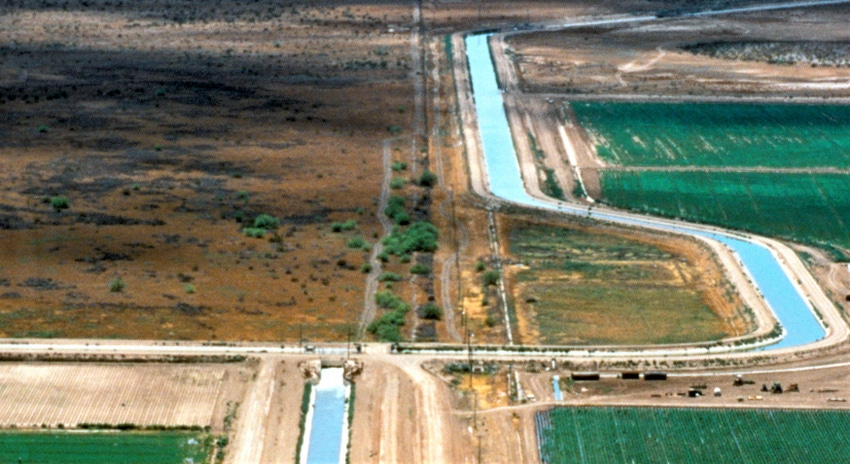
Fallowed fields of alfalfa -- alliterative, and sad as fears are about to become reality in Central Arizona farms now that Tier 1 cuts in water supplies are scheduled to take effect.
“Dry fields, less livestock, diminished dairy, it will be a ripple impact. A lot is still unknown, but this will not be an easy fix,” says Stefanie Smallhouse, who oversees the Arizona Farm Bureau.
The water cuts are expected to take out 30-to-40 percent of crop acreage in the Pinal County ag corridor that produces about half of Arizona’s agricultural sales.
“We’ve been planning for this as far back as the Arizona Water Settlement Act of 2004,” says fourth-generation farmer Bryan Hartman, who intends to fallow land in response to the water shortage mandated by the Bureau of Reclamation.
“We’ve changed our crop mix, revamped dormant wells and brought them online in preparation for the reduction in Central Arizona Project surface water,” he told fellow Farm Bureau members.
“Since we will be forced to fallow some of our productive cropland because of a limited supply of irrigation water, it’s critical to maximize yield and income to give us the best chance to stay in business. We will only be growing the most profitable crops,” he said, adding: “This won’t be easy because we’re not magicians.”
For the first time ever, a Colorado River Tier 1 shortage was declared for calendar year 2022 meaning reduced supply for some stakeholders of CAP water with Arizona’s share of the river cut by some 30 percent of normal. The Arizona Department of Water Resources stated the obvious: “The result will be less Colorado River water for Central Arizona agricultural users.”
“The day Pinal County agriculture wished would never come has arrived,” stated Farm Bureau Government Relations Director Chelsea McGuirea, noting the county’s reliance on an equal mix of groundwater and Central Arizona Project water.
Arizona loses
Arizona stands to lose more than any other Colorado River basin state because it agreed long ago to be first in line for cuts in exchange for federal funding for a canal system to deliver the liquid to major metropolitan areas. Central Arizona farmers are bearing the brunt of the cuts with a projected 40 percent of farmland that relies on the river water anticipated to go unused.
“That’s a big blow,” says Smallhouse. “Consider the individual farm family impact of losing 40 percent of their income and then add in the ripple effect. That’s been the argument we’ve been making from the beginning that this loss of water will have a multiple impact, visible to the general public who drive past fallowed fields with nothing in them.”
Tier 1 cuts mean that Arizona will lose 18% of its river supply representing 512,000 acre feet of water. In making the announcement in August following a 2-year study, the Bureau of Reclamation said the cut meant Central Arizona farmers would lose access to nearly half the water on which they now rely.
To which Farm Bureau President Smallhouse responded in a statement of her own: “Arizona’s access to water was made possible because of our agricultural history. If you’re one of the farmers who spent decades and countless dollars to wisely manager water resources, it’s difficult to wrap your head around the fact that you are the first to lose access to this precious resource. But we know the same spirit of innovation that made farmers the leaders in developing this water supply will guide them as they navigate this challenge.”
“Ultimately, the viability of Pinal County agriculture is going to depend on its ability to make some very significant changes in a very short amount of time,” added McGuire.
Wary of water talks
Asked about words of wisdom to share with other Western farmers, Smallhouse advised: “Be extremely careful when negotiations involve water. Something that might seem expensive today might be worth it in the future because you can’t create additional water…a lesson learned the hard way by Arizona farmers. And I’d add that all the things Arizona is talking about doing now in terms of augmentation of limited supplies, everybody should be talking about those issues because managing your watershed isn’t something specific to Arizona.
“Arizona farmers and ranchers have always met the challenges although that doesn’t mean everybody comes out of it without some pain and battle scars, but I don’t think farmers here are ready to throw in the towel. We’ve yet to exhaust our ability to innovate.”
[This story has been edited to correct spelling in references to Stefanie Smallhouse.]
About the Author(s)
You May Also Like




